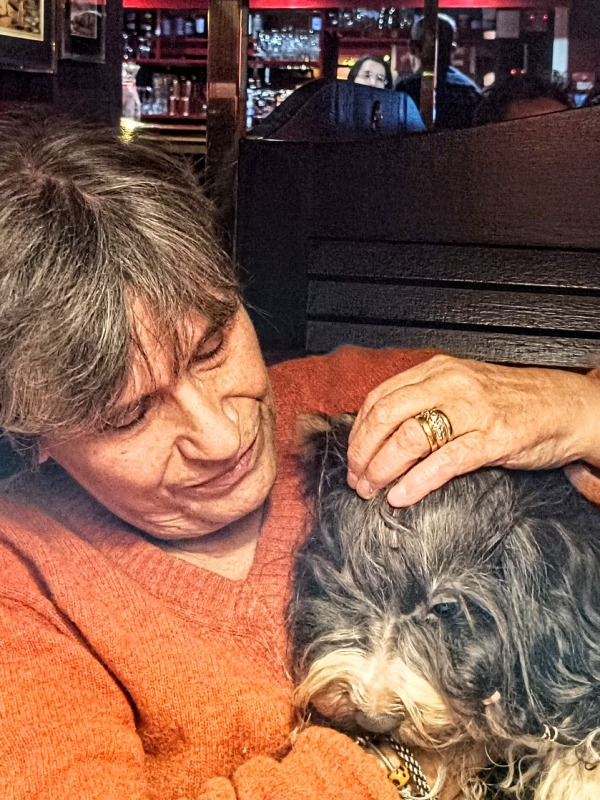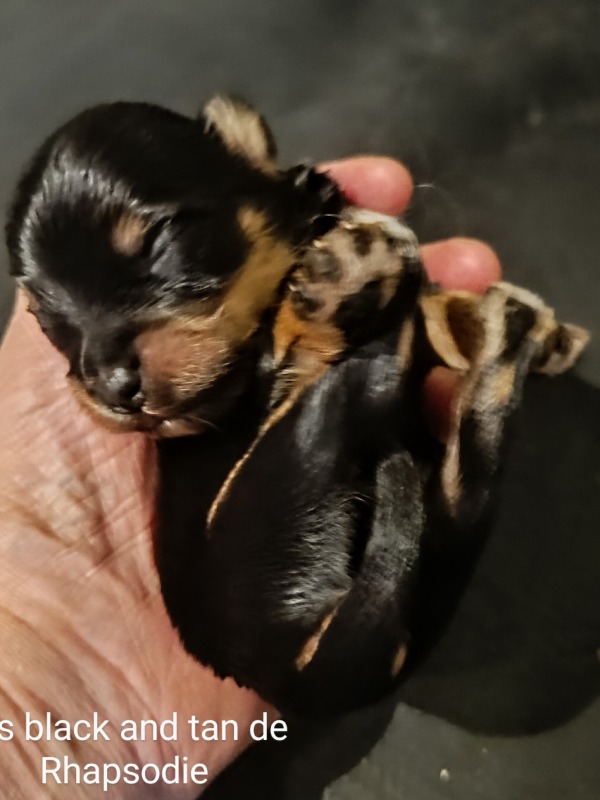Havanese dog
Welcome to our page dedicated to the breed of dog havanese dog!
Here, you will find all the useful information about havanese dog. This descriptive profile will allow you to discover the aspects of this breed. You can notably consult information about the average price, monthly and annual upkeep expenses, their health, name ideas, as well as their official recognition by competent authorities.
Explore this page to discover everything you need to know.
Overall description of the breed
The Havanese is a breed of dog that originated in Cuba. Appreciated for its playful personality and graceful appearance, it has become the companion of choice for many households around the world.
The Havanese has a long history dating back to colonial times in Cuba. It is thought to have descended from small companion dogs brought to the island by the Spanish conquerors in the 16th century. Over time, these small dogs adapted to Cuba's tropical climate and were bred to become charming companions. The Havanese was highly prized by the Cuban aristocracy and even became a favourite with dancers and entertainers in Havana's cabarets.
The Havanese is a small dog with a well-proportioned body. It has a round head with expressive dark eyes and V-shaped floppy ears. Its coat is long, silky and curly, available in a variety of colours from white to black and many shades of beige and brown. Its tail is nicely curled over its back, giving it a graceful, elegant appearance.
The Havanese is renowned for its playful, affectionate and endearing character. They are intelligent, quick-witted dogs that get on well with children and other pets. They are very close to their family and need lots of attention and affection. Bichon Havanais are also alert and attentive dogs, making them good watchdogs despite their small size. They are easy to train and generally obedient and cooperative.
The average weight of the Havanese varies between 4 and 6 kg (9 to 13 lb). The height at the withers for both males and females is generally around 23 to 28 cm (9 to 11 inches). It should be noted that these figures are averages and may vary slightly depending on the individual.
The Havanese was founded by the Havanese Club of America (BHCA) in the United States. This breed club established the breed standard, which describes the physical and behavioural characteristics sought in the Havanese. The standard was established in 1995 to guide the breeding and preservation of the breed.
The Havanese is recognised by the FCI. The breed was officially recognised on 24 September 1963 and the official publication date of its current standard is 31 October 2016. It is listed in Group 9 - Companion and Toy Dogs.
The Havanese is a happy companion with an exotic past. Its colourful history in Cuba makes it a fascinating and charming companion dog. Its elegant morphology and affectionate character make it an ideal companion for families and single people. With its recognition by the FCI, the Havanese is now officially recognised on the international scene. If you're looking for a lively, cheerful little dog, the Havanese could be the ideal companion for you.
Awareness of acquiring an animal
Each animal is a sensitive being, deserving love, attention and care.
When you choose to adopt an animal, you take on the responsibility of ensuring its health and well-being throughout its life.
To learn more about animal welfare, we invite you to consult our FAQ by clicking the button below:
Origins
The Havanese Bichon, also known as Bichon Havanês, has its roots in the city of Havana, in Cuba. Descendant of the companion dogs loved by the Cuban aristocracy in the 18th century, it is the result of a crossbreeding between different breeds such as the Bichon, Barbichon, and Chinese dog. This charming and joyful breed is a true treasure of Cuban history.
History
The Havanese Bichon has a fascinating history that dates back several centuries. Originally, it was the favorite of nobles and wealthy merchants in Cuba, who appreciated it for its elegant appearance and playful temperament. Despite periods of decline throughout history, this breed has survived thanks to the affection of its devoted admirers, to become today a popular companion in many households around the world.
Standard
The standard of the Havanese breed is defined by specific characteristics that include its size, weight, silhouette, coat, and facial expression. The Fédération Cynologique Internationale (FCI) and other internationally recognized organizations have established rigorous standards to ensure that specimens comply with the official standard.
Physical characteristics
The Havanese is a small dog with a robust and well-proportioned body. Its silky, wavy coat, often white, cream or champagne in color, is one of its most distinctive features. With its large expressive eyes and droopy ears covered in soft fur, the Havanese exudes a relaxed elegance and irresistible charm.
Character
The Havanese Bichon is known for its gentle and playful temperament. Sociable and affectionate, it loves being at the center of its family's attention. Intelligent and easy-going, it adapts well to different environments and is generally friendly towards strangers and other animals.
Life expectancy
On average, the Havanese Bichon lives between 12 and 16 years, although some individuals often exceed this age. Good nutrition, regular veterinary care, and plenty of exercise help ensure a long and happy life for this breed.
Exercise and activity needs
Although small in size, the Havanese Bichon needs daily exercise to stay healthy and balanced. Regular walks, play sessions, and engaging training activities are essential to meet its physical and mental needs.
Recommended diet
A balanced and high quality diet is essential for the health of the Havanese Bichon. Specifically formulated kibbles for small dogs, rich in essential nutrients such as proteins, fats, and vitamins, are recommended to meet their energy needs.
Training and obedience
The Havanese is an intelligent and receptive dog that responds well to consistent and positive training. Early socialization and manners training are important to help develop a balanced and obedient behavior in this breed.
Behavior with children
The Havanese Bichon is generally friendly and gentle with children, making it an excellent companion for families. Its playful and patient nature makes it an ideal playmate for children of all ages, but supervision is always recommended to ensure safe and respectful interactions.
Compatibility with Other Animals
Due to its sociable and friendly nature, the Havanese Bichon generally gets along well with other pets, including dogs and cats. Early socialization and initial supervision are recommended to foster harmonious relationships between pets.
Grooming needs
The luxurious coat of the Havanese Bichon requires regular grooming to stay clean and free of knots. Daily brushing, periodic baths, and care for the eyes and ears are essential to maintain its health and beauty.
Health
The Havanese Bichon is generally healthy, but like all breeds, it is subject to certain hereditary health problems and common conditions such as dental issues, skin allergies, and patellar luxations. Regular visits to the veterinarian and careful monitoring can help prevent and treat these problems.
Average price
The average price of a Havanese Bichon puppy varies depending on factors such as lineage, quality, and reputation of the breeder. Generally, one can expect to spend between 800 and 2000 euros, or even more, for a puppy of this breed.
Expenses
Annual expenses for a Havanese Bichon, including food, veterinary care, grooming, and accessories, can range from 500 to 1000 euros or more, depending on each dog's individual needs and local veterinary service rates.
Name ideas
To name your Havanese Bichon, you could draw from rich and meaningful inspirations. For example, you could choose a name like "Canela", which means "cinnamon" in Spanish, ideal for a golden-coated Havanese Bichon. "Lola" evokes a playful and cheerful character, in perfect harmony with this lively breed. "Simba", inspired by the courageous lion from The Lion King, would suit a confident Havanese Bichon. "Coco", short for "coconut", recalls its Cuban tropical origins.
As for "Teddy", it highlights the fluffy and cuddly side of this breed. "Luna", perfect for Havanese Bichons that shine like the moon with their charm. "Milo" embodies friendship and loyalty, while "Bella", meaning "beautiful" in Italian, suits an elegant female Havanese Bichon. "Max" is a classic name that fits with the courageous and determined personality of this dog. Finally, "Daisy" evokes freshness and cheerfulness, perfectly reflecting the lively temperament of a Havanese Bichon.
Legislation and regulation
In most countries, there is no specific legislation prohibiting the ownership or breeding of Havanese Bichons. However, it is important to comply with local laws regarding pet ownership and animal welfare.
Official recognition
The Havanese Bichon is officially recognized by the FCI (Fédération Cynologique Internationale), as well as by many other registries and breed clubs around the world. The Official Breed Club of the Havanese Bichon is based in Cuba, the country of origin of the breed.
Pedigrees
The pedigrees of the Havanese Bichon are available from a number of recognized registering organizations, such as the FCI and affiliated breed clubs. These documents attest to the purity of a dog's lineage and its conformity to breed standards.
Destination and usage
The Havanese Bichon is mainly bred as a companion and family dog. Its friendly temperament and intelligence also make it an excellent candidate for agility, obedience, and therapy activities.
Prohibitions
According to our research, there is no specific ban on the ownership or breeding of Havanese Bichons in any specific countries or regions. However, it is always advisable to check local regulations before acquiring this dog breed.
Breeders of Havanese dog
Want to see more breeders of Havanese dog?
Check out the page of our directory listing all breeders of Havanese dogClassified Ads of Havanese dog
Breed clubs of havanese dog
No of havanese dog breed clubs are currently registered on Preeders.
If you would like to highlight your breed club, sign up for free now and be the first to appear on this page.




